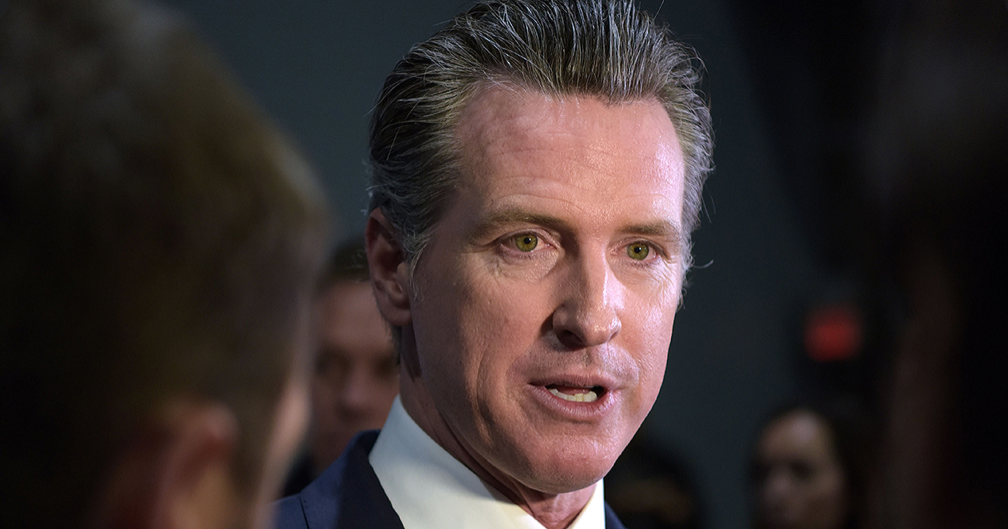A New Golden Standard: Newsom Weighs Widespread Input, Factors As He Considers Harris’ Senate Replacement

Image Courtesy of People.com
By Justin Lamoureux
Kamala Harris is no stranger to making history. In fact, doing so has been a defining aspect of her career; before her ascension to the vice presidency, Harris became the second black woman elected to the U.S. Senate, and the first to represent her native California in the legislative body. She started her career as the first person of color, and the first woman . Her record in these offices may not be without controversy, but few would argue that her legacy is not marked by shattered barriers and unprecedented accomplishments.
Needless to say, Harris is leaving big shoes to fill. This is the dilemma that California governor Gavin Newsom currently faces; by state law, he is tasked with naming the vice president-elect’s successor in the U.S. Senate. Harris’ current term is slated to end following the 2022 midterm elections, and Newsom has already ruled out authorizing a special election to determine her replacement. The clock is ticking, and while little definitive knowledge has surfaced regarding the governor’s thought process, an implicit shortlist has already been formulated.
The list of potential candidates is long, with several diverse individuals supposedly under consideration. However, California Secretary of State Alex Padilla remains the apparent favorite; having been elected to statewide office twice (and to the State Senate on two consecutive occasions), Padilla has certainly proven himself to be effective in various political capacities. During a highly unorthodox election, he oversaw a complicated process by which every registered voter in the densely populated state was issued a mail-in ballot. Two decades ago, Padilla made history when he became the youngest person ever elected president of the Los Angeles City Council; if chosen to replace Harris, he would also become the first Latino ever to represent California in the U.S. Senate.
Numerous political groups have voiced their input, and each has a different suggestion. Justice Democrats, for instance, have floated the possibility of selecting Congressman Ro Khanna to succeed Harris. Having worked for Bernie Sanders’ second presidential campaign as a national chair, Khanna’s progressive credentials are unquestioned. At 44, he would also constitute a fresh, young face for the party and likely gain favorability with a younger (and more diverse) electorate.
Black Lives Matter, meanwhile, has circulated a petition that urges Newsom to replace Harris with a black woman. Given the historical significance of Harris’ election, this would certainly be a fitting tribute. Likewise, this would solidify the current demographic balance of the U.S. Senate, and ensure that a group which proved instrumental to Democrats’ success down the ballot is adequately represented in Congress.
Pressure to appoint a black woman to Harris’ seat has been echoed by former San Francisco Mayor Willie Brown. The first African-American elected to said office, Brown argues that “there should be no contest,” and that Latino advocates “should know” not to promote Secretary Padilla for the office, because racial minorities “should not try to replace each other’s vacancies.” Some African-American women that have been mentioned as possible choices include Congresswoman Karen Bass (chair of the Congressional Black Caucus, who was vetted by the Biden campaign as a potential running mate earlier this year), and Barbara Lee (vice chair and founding member of the LGBT caucus, who made headwaves as the only member of Congress to vote against the U.S. invasion of Afghanistan). Also speculated as a possible appointee is London Breed; the current mayor of San Francisco, Breed has received praise for her administration’s handling of the COVID-19 pandemic.
Given the tremendous influence Harris’ replacement would yield as a member of the U.S. Senate, Newsom must weigh myriad factors as he determines the best suitor. Besides the obvious consideration of diversity, some of the points the governor must consider include geography (the aforementioned “candidates” hail primarily from overwhelmingly Democratic population centers along the state’s coast), electability, and political compatibility.
Of course, there is a “wild card” scenario, in which Newsom appoints himself to Harris’ seat. As Willie Brown underscored in a recent op-ed, it’s no secret that Newsom yields political ambitions that go beyond his current office. It has been argued that he would stand a better chance of influencing the party platform, and securing his own political future, as a member of the U.S. Senate. However, Nathan Ballard, a longtime advisor to Newsom, was very quick to dismiss this possibility, asserting that “diversity is a given” with regard to his boss’s ultimate choice. Ballard also made it clear that California’s next U.S. Senator “will not look like [Newsom],” meaning this person will not be a white male.
With less than two months remaining until Harris begins the next stage of her political career, the stakes could not be higher. Granted, California is undoubtedly one of the most reliably Democratic states in the country, which translates into minimal concern that whoever succeeds Harris will manage to retain this seat for the party itself down the road. However, this choice has two noteworthy implications: For starters, the demographics of California (which is also one of the most diverse states in the union) increasingly resemble those of the Democratic Party itself. With that being said, Harris’ successor will most likely come to embody the average Democratic voter in the coming years. What’s more, Governor Newsom himself is up for re-election in 2022; with an apparent political future of his own, it is certainly possible that said decision will influence his own popularity among constituents.
Little is certain about who will assume responsibility for Harris’ current posting come January. Given the exigent nature of COVID-19 (on both a statewide and national level), it remains unlikely that we will find out in the coming weeks. However, one would be remiss not to make a pertinent assumption: California’s next U.S. Senator will be the future of the Democratic Party.






